History of the Staffy
Formally, this breed is known as the Staffordshire Bull Terrier (that’s right, they are a Terrier breed!) but most Australians know them as the familiar Staffy. It’s thought that these dogs were originally bred in England from a now extinct breed type, the ‘Bull and Terrier’. The Staffy’s ancestors weren’t always afforded the comfortable and civilised lifestyle Staffy’s enjoy today; the ‘Bull and Terrier’ was bred in the early 1800s for bull fighting and bear baiting. Fortunately, these two dangerous sports were banned by 1835 with the introduction of animal welfare laws. The popular Staffy we know today shares this ancestry with several other breeds including the Bull Terrier and the American Staffordshire Terrier, the latter also sometimes referred to as a ‘Staffy’. These breeds do differ in size, appearance, and behaviour, so it’s worth learning more about each before deciding if a strong and active Terrier is for you.
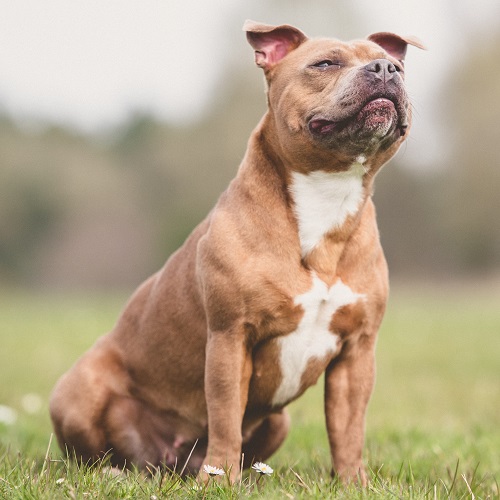
Temperament (Do you want a furry bulldozer?)
Despite their compact frame, Staffordshire Bull Terriers are energetic and muscular dogs who love to wrestle, tug, and chew, usually with great enthusiasm! Being somewhat intolerant of heat, Staffies are not the most suitable running companions, but they do show moderate stamina and are most appropriate for people with an active lifestyle. To keep a Staffy truly happy, owners need to provide plenty of mental stimulation and training, as well as physical activity. A Staffy that has plenty of opportunity to chew on appropriate toys, play interactively with their owners, and practice obedience skills using force-free training techniques will make a happier and more well-mannered family member. Staffies can be over-excitable and impulsive and have the tendency to throw their weight around and use their mouths in play. After all, these dogs are descended from bull fighters! This boisterous and bouncy behaviour can put children at risk of being knocked over so, as with any dog, a Staffy should always be supervised and managed with children. When given appropriate avenues to express their natural play styles and taught how to be calm around children and in the home, Staffies make fun and friendly family members. If you are keen to add a Staffy to your family, plan to start positive reinforcement training early to help your Staffy become a confident and polite dog around people and other dogs.
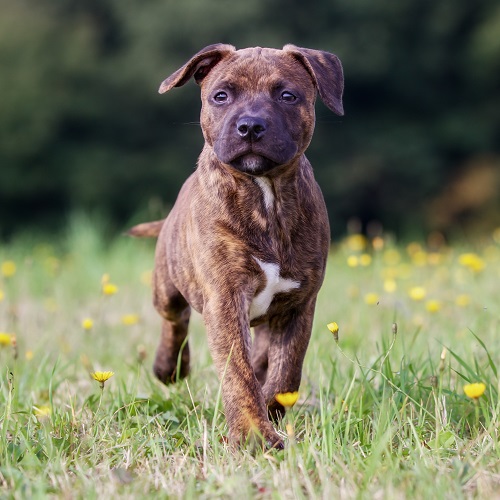
Appearance
Strong and athletic, the Staffordshire Bull Terrier is a medium-sized, well-balanced dog with a short, close coat with a natural gleam. Their head is broad and the jaw is strong. They have a short muzzle and very distinct cheek muscles. Their coat can come in a variety of colours, including red, fawn, white, black or blue that’s smooth in texture and lies close to the skin. They usually have dark round eyes but this can vary a little depending on the colour of their coat.
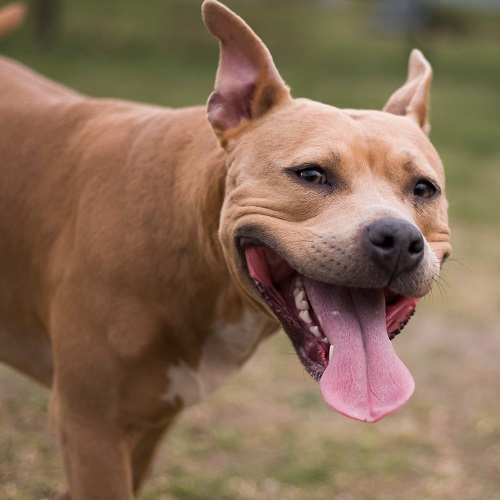
Suitability

Suitability
The Staffy has an appealing combination of enthusiasm for adventure and the ability to sleep in late and take it easy, making them a popular choice for many kinds of families. Before bringing any dog into your life, it’s important to consider the time that you will be able to commit to the dog’s care and training. A bored or stressed Staffy may engage in destructive chewing or digging and will likely be more excitable and unruly when they do have your attention. Staffy owners should expect to spend time providing daily exercise and mental stimulation such as puzzle feeding toys and training games. Staffies can live with children, other dogs and small pets, but these relationships require supervision and an investment in positive reinforcement training for safe and enjoyable interactions for all. Early socialisation and training is the best way to help your Staffy become a calm and gentle family member. Ask your local Greencross Vets when their next Pet School class is scheduled to begin.
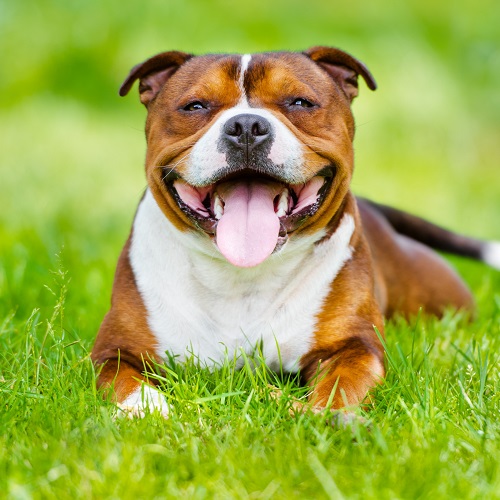
Health & Wellbeing
The Staffy breed does have some potential health problems. A reputable breeder will screen for many hereditary diseases, including L2-HGA (a metabolic disorder) and Hereditary Cataracts (though there is no record of this condition ever being in Australian breed lines). Other common conditions in this breed include skin allergies, Mast Cell Tumours, Inverted Canines, Tibial Crest Avulsion and Epilepsy. These health issues may require ongoing treatment or surgery over the course of an affected dog’s life, so it’s important to consider the potential costs and care involved in owning a Staffy before bringing one home. Talk to your local Greencross Vets for further information about Staffy health.
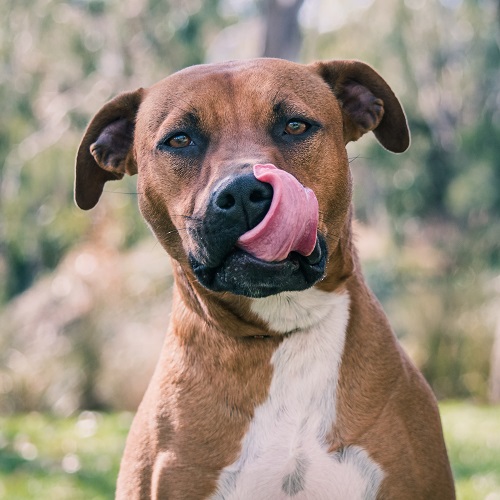
Grooming
Staffies are a fairly low maintenance breed when it comes to grooming. Their short, close coat is generally low shedding and a quick brush once a week will keep them looking tidy. A Staffy’s diet can have a big influence on the health of their skin and coat, so speak with your local Greencross Vets about the best complete and balanced diet to provide. An occasional bath and nail trim will keep a Staffy clean and comfortable, but as Staffies are prone to skin irritation and allergies, it’s best to look for ‘sensitive’ formula shampoos. Staffies love to chew and regular chewing on a suitable toy or dental treat will help maintain good dental health.
At Greencross Vets, nothing is more important than the health and wellbeing of your four-legged friend. If you have any more questions, please reach out to your local Greencross Vets. You can find your local Greencross Vets here. We’re more than happy to help!

 Greencross Vets
Greencross Vets 

